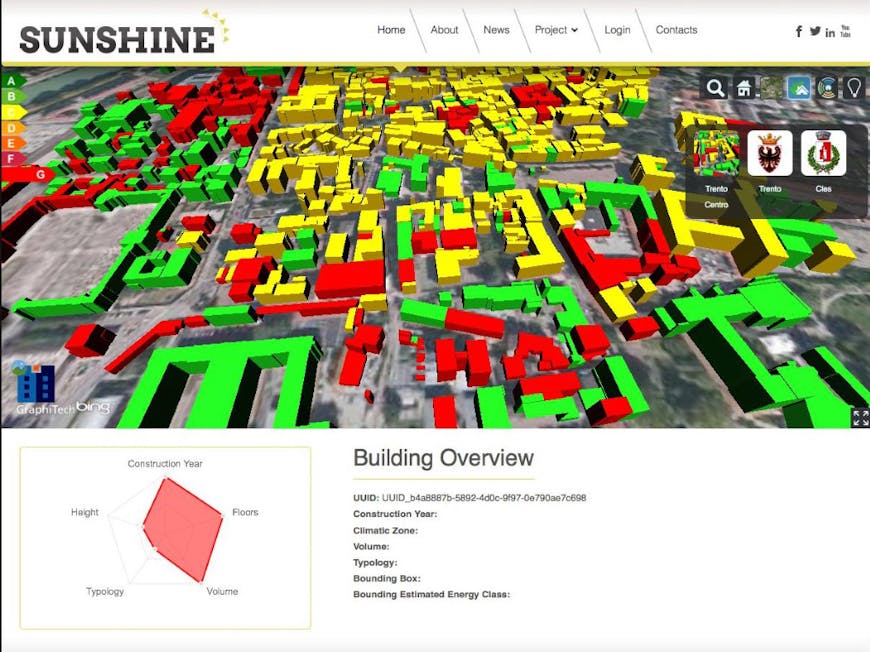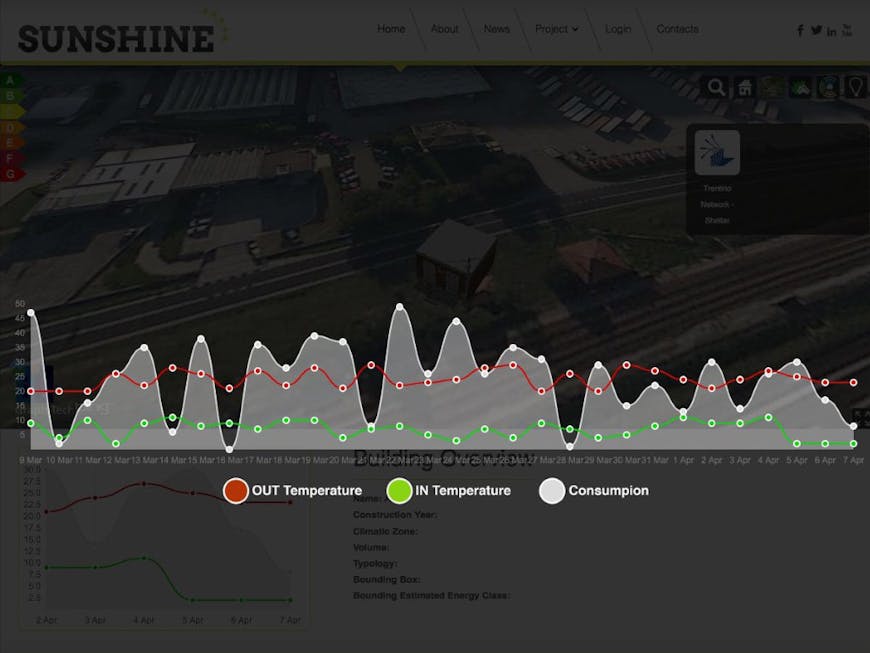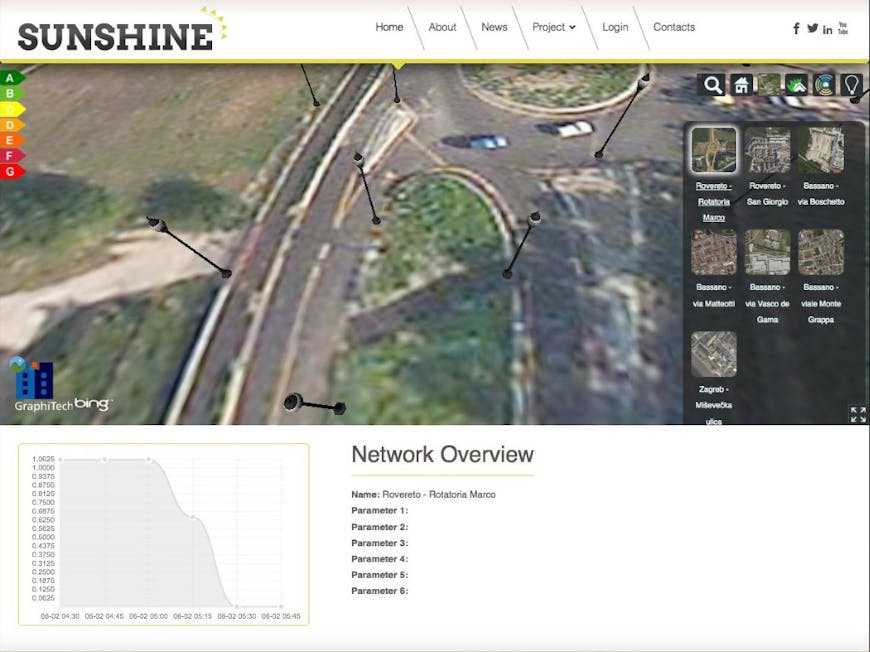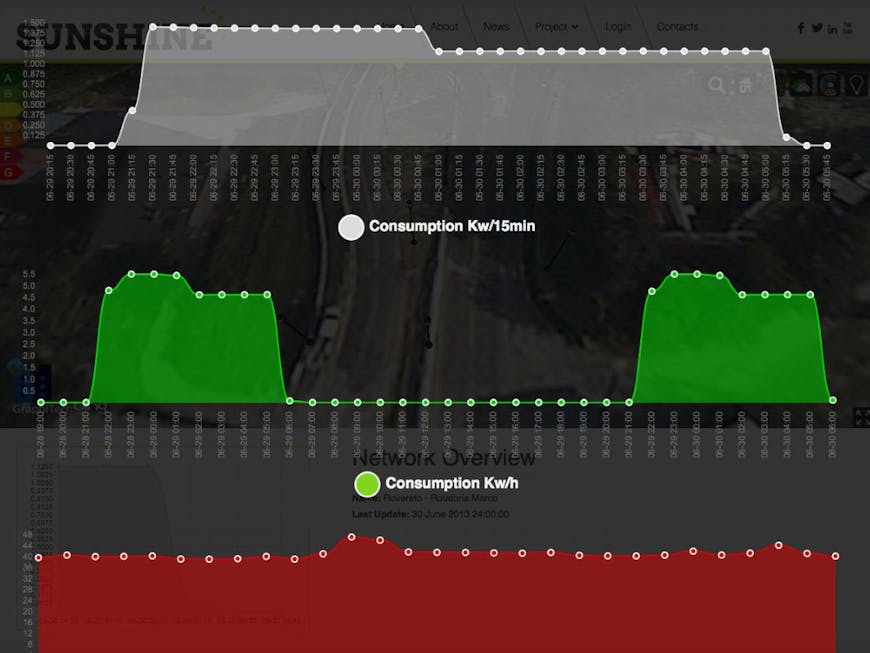SUNSHINE Supports Improved Energy Efficiency in Urban Spaces
SUNSHINE - “Smart UrbaN ServIces for Higher eNergy Efficiency” delivers innovative digital services, interoperable with existing geographic web-service infrastructures, supporting improved energy efficiency at the urban and building level.





In particular, the SUNSHINE platform will allow:
- Automatic large-scale assessment of building energy behaviour based on data available from public services (e.g. cadastre, planning data etc.). The information on energy performances will be used to automatically create urban-scale “ecomaps” to be used for planning activities and large-scale energy pre-certification purposes.
- The previous assessment will be then used, together with localized weather forecasts available through interoperable web-services, to ensure optimization of energy consumption of heating/cooling systems through automatic alerts that will be sent to the SUNSHINE Web Portal.
- Lastly SUNSHINE will ensure interoperable remote control of public illumination systems based on Automatic Meter Reading (AMR) facilities remotely accessible, via interoperable standards.
SUNSHINE will be piloted for the duration of 12 months, and will targeted at energy and emission savings ranging, within the various pilots, from 10% to 30%, with higher savings being foreseen for pilots relying on older buildings, or equipped with older heating, cooling or lighting technologies. Energy savings will be compared to a one-year baseline data acquired, during the first stages of the project prior to the deployment of the pilots.
SUNSHINE is an European Co-Founded Project, coordinated by Fondazione Graphitech.
The video below shows the first Alpha version of the SUNSHINE Web Portal. In this demo it is possible to see:
- Large Scale City Models based on CityGML (LOD-1) OGC Standard
- Ecomap Test
- Visualization of real time sensor data obtained by the use of the SOS 2.0 OGC Standard
- Visualization of historical sensor data obtained by the use of the SOS 2.0 OGC Standard